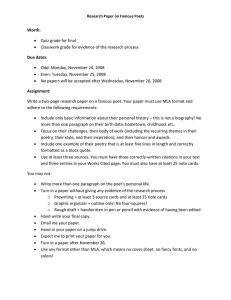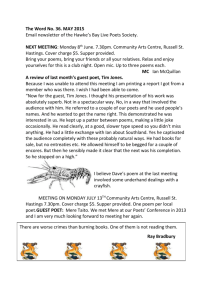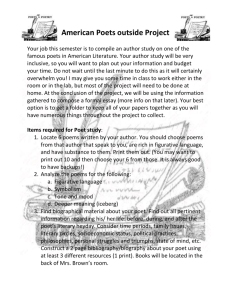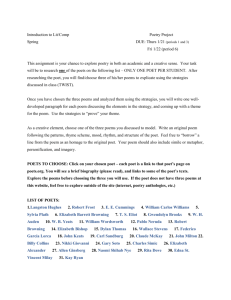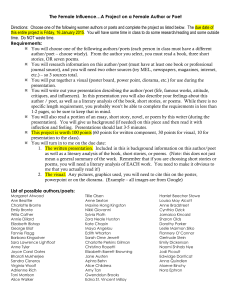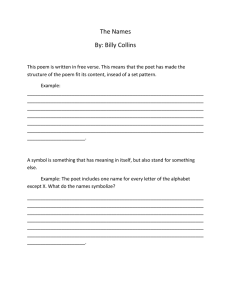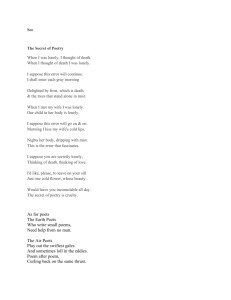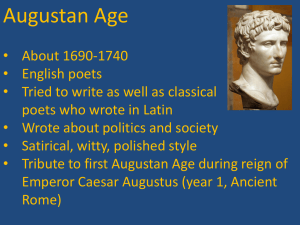English III Group Poetry Project
advertisement
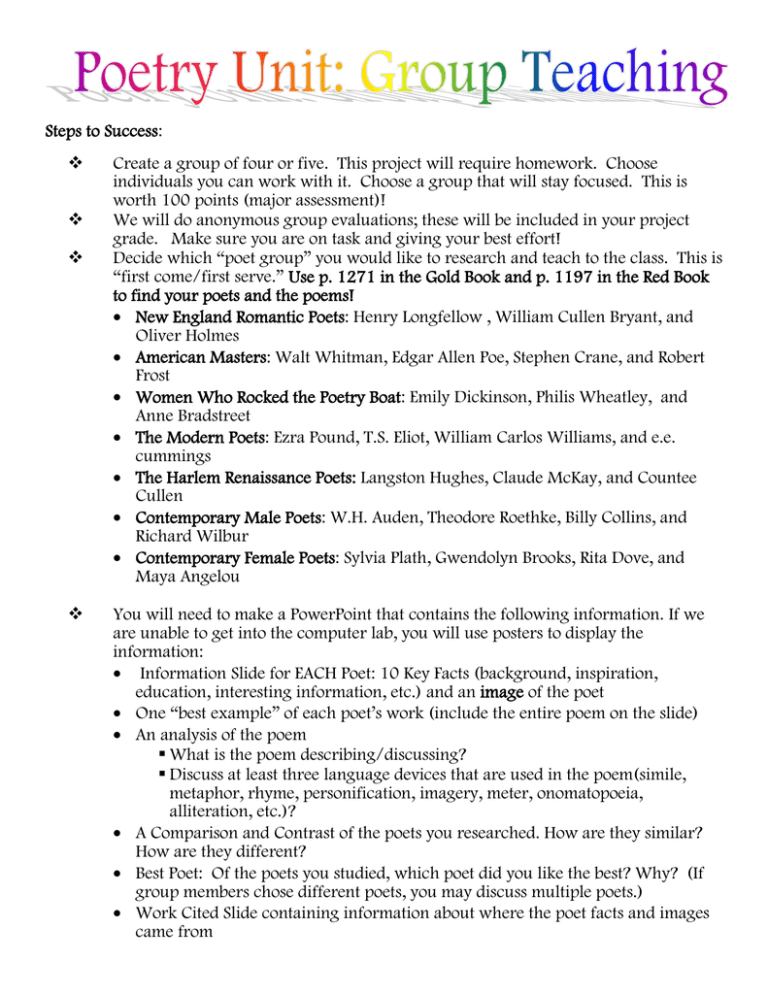
Steps to Success: Create a group of four or five. This project will require homework. Choose individuals you can work with it. Choose a group that will stay focused. This is worth 100 points (major assessment)! We will do anonymous group evaluations; these will be included in your project grade. Make sure you are on task and giving your best effort! Decide which “poet group” you would like to research and teach to the class. This is “first come/first serve.” Use p. 1271 in the Gold Book and p. 1197 in the Red Book to find your poets and the poems! New England Romantic Poets: Henry Longfellow , William Cullen Bryant, and Oliver Holmes American Masters: Walt Whitman, Edgar Allen Poe, Stephen Crane, and Robert Frost Women Who Rocked the Poetry Boat: Emily Dickinson, Philis Wheatley, and Anne Bradstreet The Modern Poets: Ezra Pound, T.S. Eliot, William Carlos Williams, and e.e. cummings The Harlem Renaissance Poets: Langston Hughes, Claude McKay, and Countee Cullen Contemporary Male Poets: W.H. Auden, Theodore Roethke, Billy Collins, and Richard Wilbur Contemporary Female Poets: Sylvia Plath, Gwendolyn Brooks, Rita Dove, and Maya Angelou You will need to make a PowerPoint that contains the following information. If we are unable to get into the computer lab, you will use posters to display the information: Information Slide for EACH Poet: 10 Key Facts (background, inspiration, education, interesting information, etc.) and an image of the poet One “best example” of each poet’s work (include the entire poem on the slide) An analysis of the poem What is the poem describing/discussing? Discuss at least three language devices that are used in the poem(simile, metaphor, rhyme, personification, imagery, meter, onomatopoeia, alliteration, etc.)? A Comparison and Contrast of the poets you researched. How are they similar? How are they different? Best Poet: Of the poets you studied, which poet did you like the best? Why? (If group members chose different poets, you may discuss multiple poets.) Work Cited Slide containing information about where the poet facts and images came from Day One1. 2. 3. 4. 5. 6. 7. 8. Choose a group Choose a group of poets Write down 10 facts for each poet Decide which poems you will use (one for each poet) Read the poems Complete the analysis for each poem (meaning and literary devices) Write down how the poems are similar/dissimilar Choose your favorite poet Day Two1. Using your notes from yesterday and the PowerPoint template, make your slide show. 2. Find images for your poets; add them to the slide show. 3. Add sources to the Work Cited slide for any information found outside of the textbooks. Day Three 1. Present Power Points Poetry Group Teaching Rubric (100) Information (35) 10 Facts per poet (20) Poet Images (5) Work Cited Slide (5) Copy of Poem (5) Analysis (45) Meaning of Poem (10) 3 Literary Devices Identified and Analyzed (15) Best Poet Slide (10) Compare/Contrast Slide (10) Appearance (10) Slides are neat, free of errors, and easy to read Presentation (10) All members Participate Professional (familiar with slides, volume, smooth transitions)
